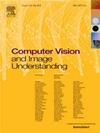RAFNet: Rotation-aware anchor-free framework for geospatial object detection
IF 4.3
3区 计算机科学
Q2 COMPUTER SCIENCE, ARTIFICIAL INTELLIGENCE
引用次数: 0
Abstract
Object detection in remote sensing images plays a crucial role in applications such as disaster monitoring, and urban planning. However, detecting small and rotated objects in complex backgrounds remains a significant challenge. Traditional anchor-based methods, which rely on preset anchor boxes with fixed sizes and aspect ratios, face three core limitations: geometric mismatch (difficulty adapting to rotated objects and feature confusion caused by dense anchor boxes), missed detection of small objects (feature loss due to the decoupling between anchor boxes and feature map strides), and parameter sensitivity (requiring complex anchor box combinations for multi-scale targets).
To address these challenges, this paper proposes an anchor-free detection framework, RAFNet, integrating three key innovations: Mona Swin Transformer as the backbone to enhance feature extraction, Rotated Feature Pyramid Network (Rotated FPN) for rotation-aware feature representation, and Local Importance-based Attention (LIA) mechanism to focus on critical regions and improve object feature representation. Extensive experiments on the DOTA1.0 dataset demonstrate that RAFNet achieves a mean Average Precision (mAP) of 74.91, outperforming baseline models by 3.24%, with significant improvements in challenging categories such as helicopters (+32.5% AP) and roundabouts (+4% AP). The model achieves the mAP of 30.29% on the STAR dataset, validating its high adaptability and robustness in generalization tasks. These results highlight the effectiveness of the proposed method in detecting small, rotated objects in complex scenes. RAFNet offers a more flexible, efficient, and generalizable solution for remote sensing object detection, underscoring the great potential of anchor-free approaches in this field.
RAFNet:用于地理空间目标检测的旋转感知无锚框架
遥感图像中的目标检测在灾害监测、城市规划等应用中发挥着至关重要的作用。然而,在复杂背景下检测小的和旋转的物体仍然是一个重大的挑战。传统的基于锚点的方法依赖于固定尺寸和宽高比的预设锚点盒,面临三个核心局限性:几何失配(难以适应旋转物体和密集锚点盒导致的特征混淆)、小目标检测缺失(锚点盒与特征图步长解耦导致的特征丢失)和参数敏感性(多尺度目标需要复杂的锚点盒组合)。为了应对这些挑战,本文提出了一种无锚点检测框架RAFNet,该框架集成了三个关键创新:Mona Swin Transformer作为增强特征提取的骨干,旋转特征金字塔网络(rotation FPN)用于旋转感知特征表示,以及基于局部重要性的注意(LIA)机制,以关注关键区域并改进目标特征表示。在DOTA1.0数据集上进行的大量实验表明,RAFNet的平均平均精度(mAP)为74.91,比基线模型高出3.24%,在直升机(+32.5% AP)和环形交叉路口(+4% AP)等具有挑战性的类别中有显著提高。该模型在STAR数据集上实现了30.29%的mAP,验证了其在泛化任务中的高适应性和鲁棒性。这些结果突出了该方法在复杂场景中检测旋转小物体的有效性。RAFNet为遥感目标检测提供了更灵活、高效和通用的解决方案,强调了无锚方法在该领域的巨大潜力。
本文章由计算机程序翻译,如有差异,请以英文原文为准。
求助全文
约1分钟内获得全文
求助全文
来源期刊

Computer Vision and Image Understanding
工程技术-工程:电子与电气
CiteScore
7.80
自引率
4.40%
发文量
112
审稿时长
79 days
期刊介绍:
The central focus of this journal is the computer analysis of pictorial information. Computer Vision and Image Understanding publishes papers covering all aspects of image analysis from the low-level, iconic processes of early vision to the high-level, symbolic processes of recognition and interpretation. A wide range of topics in the image understanding area is covered, including papers offering insights that differ from predominant views.
Research Areas Include:
• Theory
• Early vision
• Data structures and representations
• Shape
• Range
• Motion
• Matching and recognition
• Architecture and languages
• Vision systems
 求助内容:
求助内容: 应助结果提醒方式:
应助结果提醒方式:


